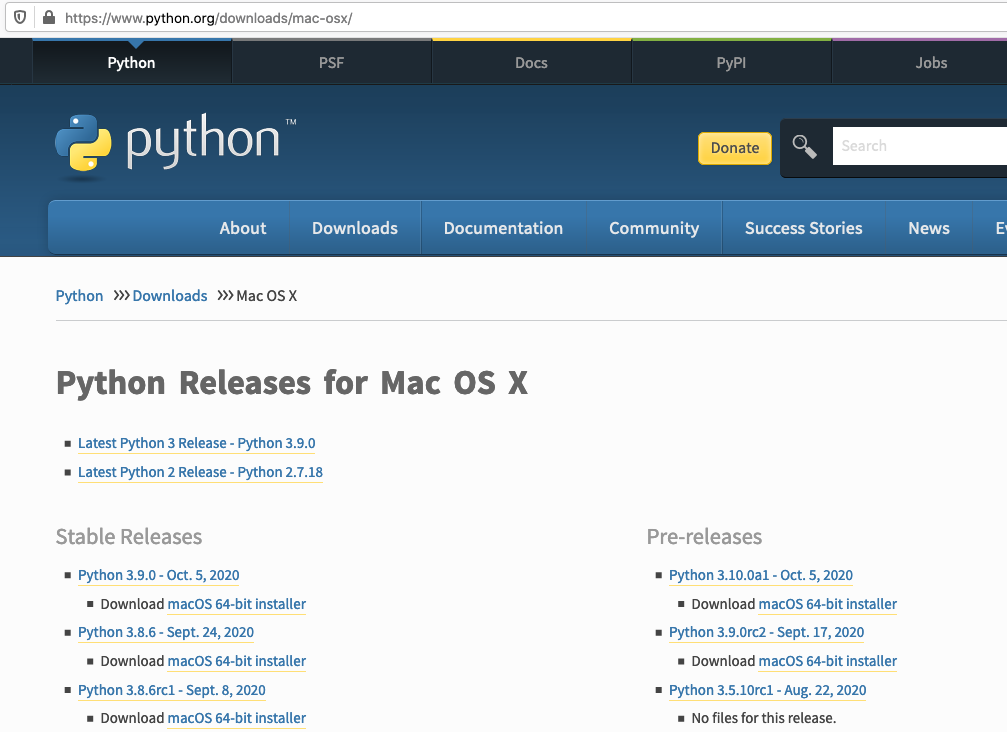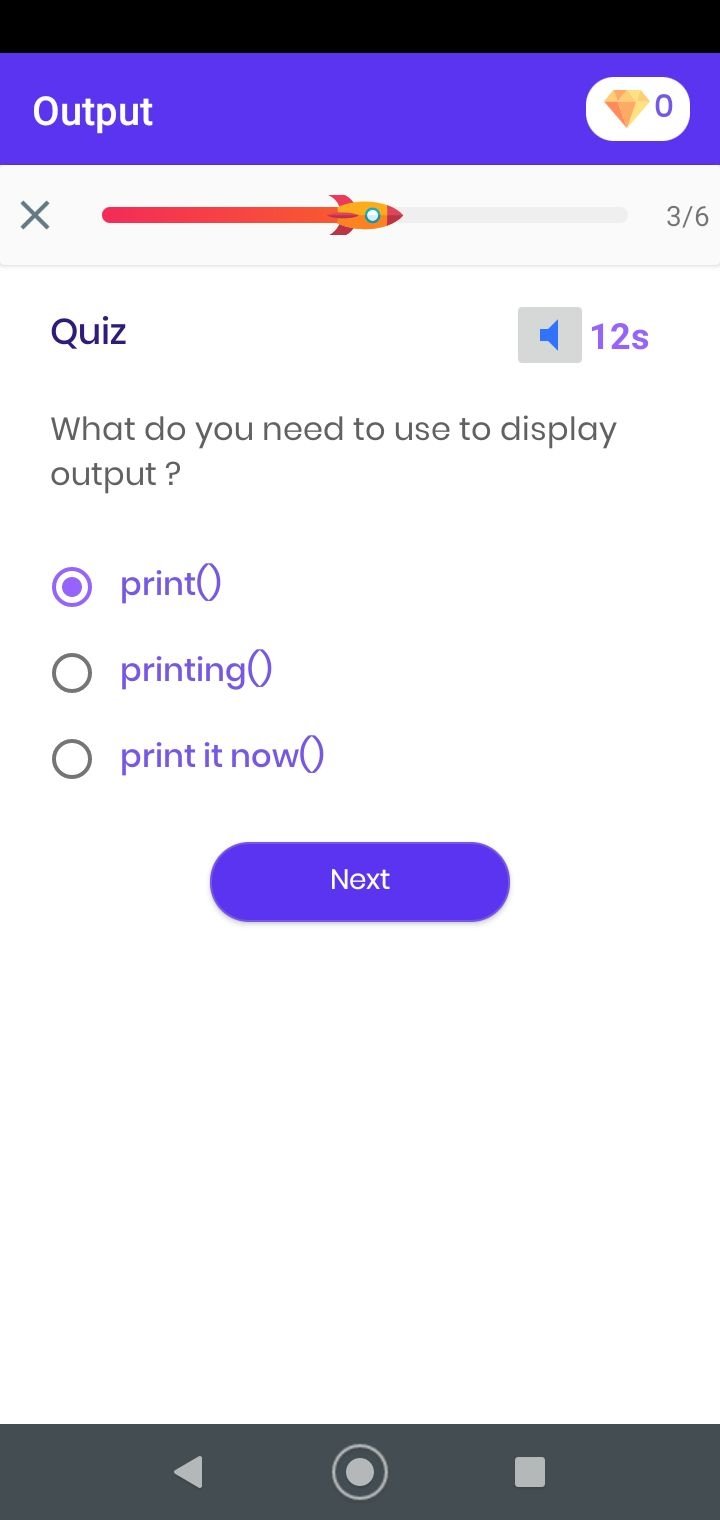Python is a widely-used general-purpose, high-level programming language. This article will serve as a complete tutorial on How to download and install Python latest version on macOS / Mac OS X.Like Linux, macOS also comes with Python pre-installed on the system. Prerequisite: Python Language Introduction Before we start with how to install pip for Python on macOS, let’s first go through the basic introduction to Python. Python is a widely-used general-purpose, high-level programming language. Python is a programming language that lets you work quickly and integrate systems more efficiently.
The only prerequisite for installing NumPy is Python itself. If you don’t havePython yet and want the simplest way to get started, we recommend you use theAnaconda Distribution - it includesPython, NumPy, and many other commonly used packages for scientific computingand data science.
NumPy can be installed with conda, with pip, with a package manager onmacOS and Linux, or from source.For more detailed instructions, consult our Python and NumPyinstallation guide below.
CONDA
If you use conda, you can install NumPy from the defaults or conda-forgechannels:


PIP
If you use pip, you can install NumPy with:
Also when using pip, it’s good practice to use a virtual environment -see Reproducible Installs below for why, andthis guidefor details on using virtual environments.

Installing and managing packages in Python is complicated, there are anumber of alternative solutions for most tasks. This guide tries to give thereader a sense of the best (or most popular) solutions, and give clearrecommendations. It focuses on users of Python, NumPy, and the PyData (ornumerical computing) stack on common operating systems and hardware.
Recommendations
We’ll start with recommendations based on the user’s experience level andoperating system of interest. If you’re in between “beginning” and “advanced”,please go with “beginning” if you want to keep things simple, and with“advanced” if you want to work according to best practices that go a longer wayin the future.
Beginning users
On all of Windows, macOS, and Linux:
- Install Anaconda (it installs allpackages you need and all other tools mentioned below).
- For writing and executing code, use notebooks inJupyterLab forexploratory and interactive computing, andSpyder or Visual Studio Codefor writing scripts and packages.
- Use Anaconda Navigator tomanage your packages and start JupyterLab, Spyder, or Visual Studio Code.
Advanced users
Windows or macOS
- Install Miniconda.
- Keep the
baseconda environment minimal, and use one or moreconda environmentsto install the package you need for the task or project you’re working on. - Unless you’re fine with only the packages in the
defaultschannel, makeconda-forgeyour default channel via setting the channel priority.
Linux
If you’re fine with slightly outdated packages and prefer stability over beingable to use the latest versions of libraries:
- Use your OS package manager for as much as possible (Python itself, NumPy, andother libraries).
- Install packages not provided by your package manager with
pip install somepackage --user.
If you use a GPU:
- Install Miniconda.
- Keep the
baseconda environment minimal, and use one or moreconda environmentsto install the package you need for the task or project you’re working on. - Use the
defaultsconda channel (conda-forgedoesn’t have good support forGPU packages yet).
Otherwise:
- Install Miniforge.
- Keep the
baseconda environment minimal, and use one or moreconda environmentsto install the package you need for the task or project you’re working on.
Alternative if you prefer pip/PyPI
For users who know, from personal preference or reading about the maindifferences between conda and pip below, they prefer a pip/PyPI-based solution,we recommend:
- Install Python from python.org,Homebrew, or your Linux package manager.
- Use Poetry as the most well-maintained toolthat provides a dependency resolver and environment management capabilitiesin a similar fashion as conda does.
Python package management
Managing packages is a challenging problem, and, as a result, there are lots oftools. For web and general purpose Python development there’s a wholehost of toolscomplementary with pip. For high-performance computing (HPC),Spack is worth considering. For most NumPyusers though, conda andpip are the two most popular tools.
Pip & conda
The two main tools that install Python packages are pip and conda. Theirfunctionality partially overlaps (e.g. both can install numpy), however, theycan also work together. We’ll discuss the major differences between pip andconda here - this is important to understand if you want to manage packageseffectively.
The first difference is that conda is cross-language and it can install Python,while pip is installed for a particular Python on your system and installs otherpackages to that same Python install only. This also means conda can installnon-Python libraries and tools you may need (e.g. compilers, CUDA, HDF5), whilepip can’t.
The second difference is that pip installs from the Python Packaging Index(PyPI), while conda installs from its own channels (typically “defaults” or“conda-forge”). PyPI is the largest collection of packages by far, however, allpopular packages are available for conda as well.
The third difference is that conda is an integrated solution for managingpackages, dependencies and environments, while with pip you may need anothertool (there are many!) for dealing with environments or complex dependencies.
Reproducible installs
As libraries get updated, results from running your code can change, or yourcode can break completely. It’s important to be able to reconstruct the setof packages and versions you’re using. Best practice is to:
- use a different environment per project you’re working on,
- record package names and versions using your package installer;each has its own metadata format for this:
- Conda: conda environments and environment.yml
- Pip: virtual environments andrequirements.txt
- Poetry: virtual environments and pyproject.toml
NumPy packages & accelerated linear algebra libraries
Download Anaconda Python For Mac
NumPy doesn’t depend on any other Python packages, however, it does depend on anaccelerated linear algebra library - typicallyIntel MKL orOpenBLAS. Users don’t have to worry aboutinstalling those (they’re automatically included in all NumPy install methods).Power users may still want to know the details, because the used BLAS canaffect performance, behavior and size on disk:

The NumPy wheels on PyPI, which is what pip installs, are built with OpenBLAS.The OpenBLAS libraries are included in the wheel. This makes the wheellarger, and if a user installs (for example) SciPy as well, they will nowhave two copies of OpenBLAS on disk.
In the conda defaults channel, NumPy is built against Intel MKL. MKL is aseparate package that will be installed in the users' environment when theyinstall NumPy.
In the conda-forge channel, NumPy is built against a dummy “BLAS” package. Whena user installs NumPy from conda-forge, that BLAS package then gets installedtogether with the actual library - this defaults to OpenBLAS, but it can alsobe MKL (from the defaults channel), or evenBLIS or reference BLAS.
The MKL package is a lot larger than OpenBLAS, it’s about 700 MB on diskwhile OpenBLAS is about 30 MB.
MKL is typically a little faster and more robust than OpenBLAS.
Besides install sizes, performance and robustness, there are two more things toconsider:
- Intel MKL is not open source. For normal use this is not a problem, but ifa user needs to redistribute an application built with NumPy, this could bean issue.
- Both MKL and OpenBLAS will use multi-threading for function calls like
np.dot, with the number of threads being determined by both a build-timeoption and an environment variable. Often all CPU cores will be used. This issometimes unexpected for users; NumPy itself doesn’t auto-parallelize anyfunction calls. It typically yields better performance, but can also beharmful - for example when using another level of parallelization with Dask,scikit-learn or multiprocessing.
Download Python Mac Os X
Troubleshooting
If your installation fails with the message below, see TroubleshootingImportError.